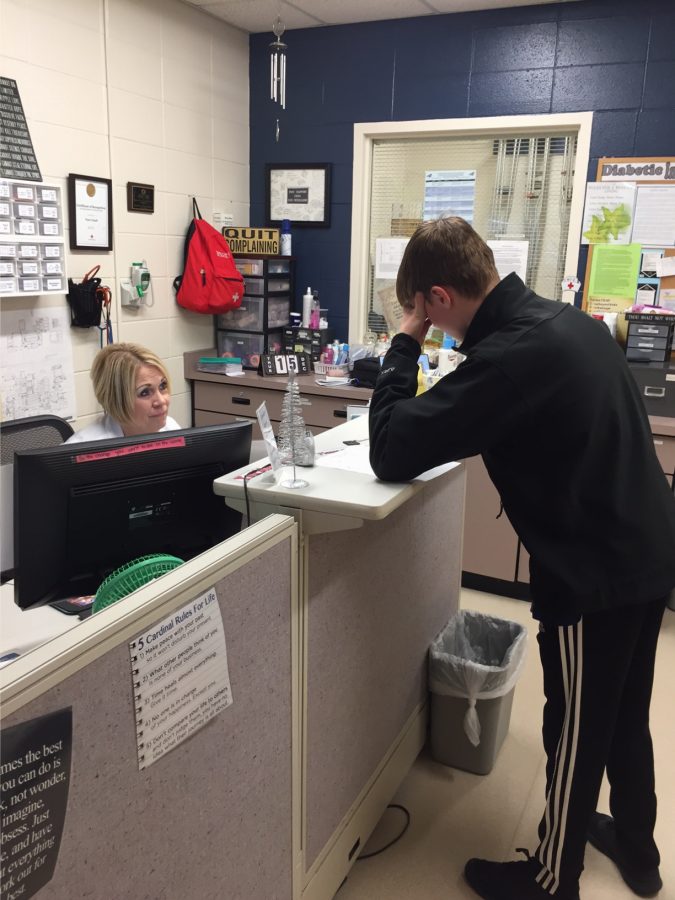Do you really have a migraine?
Migraines vs. headaches
There isn’t one thing that drives Pam Cinadr, school nurse, more crazy than when kids come into her office and complain of having a migraine, when more often than not, they are just suffering from a headache. Cinadr explains, “A headache is pain or discomfort in the head, scalp, or neck. Serious causes of headaches are rare. Most people with headaches can feel much better by making lifestyle changes, learning ways to relax, and sometimes by taking medicines. A migraine is a complex condition with a wide variety of symptoms. For many people the main feature is a severely painful headache. Other symptoms include disturbed vision, sensitivity to light, sound and smells, feeling sick, and vomiting.” Cinadr wants kids to understand the differences between the two because of drastic differences between the two.
Cinadr states, “I think they say it because it has more of an impact. I don’t know whether it’s empathy or whether or not they will think that their condition is more serious, or that I’m going to think that they’re in more pain than with a normal headache.” Most of the time, headaches can be cured by, “Eating healthy and drinking plenty of fluids because dehydration is probably the number one cause of a headache,” Cinadr explains.
Cinadr has years of experience as a nurse and says that she can tell immediately, just by looking at someone if they have a migraine or not. Cinadr gives an example of what she means, saying, “I did have a kid in here today that I’m sure that he was having a migraine. He knew what to take immediately, he probably just has not been to the doctor and been diagnosed, but you could tell by looking at him that he didn’t just have a headache.”
Cinadr says that she is so tired of people who come in and use the term migraine, when they truly don’t have a migraine. She finds it offensive to the people who do actually suffer from true migraines. Cinadr wants students to know, “When you walk through my door, you have a smile on your face talking to your buddy on the way in, we have windows we can see you coming in. Your color is normal; you walk in with your eyes wide open and you say you have a migraine, we know you don’t have a migraine. When you walk in here and your hands are over your eyes because you can’t stand the light and you’re so pale that you have just no color in your face, I can tell that you are in pain. I mean we can tell by looking at kids if you have a headache, or if you really did just throw up, we can tell those things by looking at you.” Cinadr urges students before they come into her office claiming they have a migraine, to think if they are truly having a migraine and not just a headache.
